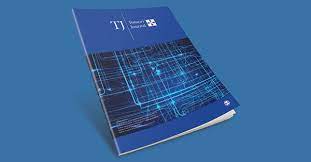Don’t Press the Pandemic Panic Button: Scientists’ Caution on China Pneumonia Report
Table Of Contents
## I. Introduction
A. Brief overview of the article’s topic
B. Importance of addressing pandemic-related information responsibly
II. The China Pneumonia Report
A. Background information on the reported pneumonia cases
B. Concerns raised by scientists
C. Need for cautious interpretation
III. Perplexity in Pandemic Information
A. Explanation of perplexity in pandemic-related reports
B. Challenges in understanding and interpreting data
C. Importance of clear communication
IV. Burstiness of Information
A. Definition of burstiness in the context of pandemic information
B. Instances of burstiness in the China pneumonia report
C. Impact on public perception
V. Specificity in Reporting
A. The role of specificity in conveying accurate information
B. Examples of specific and non-specific information in the report
C. Balancing detail and simplicity
VI. Contextualizing Pandemic Reports
A. The significance of context in interpreting pandemic data
B. How lack of context can contribute to misinformation
C. Examples from the China pneumonia report
VII. Engaging the Reader
A. Techniques to keep readers interested in pandemic-related content
B. Use of anecdotes and real-life examples
C. Importance of a conversational tone
VIII. Utilizing Personal Pronouns
A. Benefits of using personal pronouns in pandemic communication
B. Creating a sense of connection with the audience
C. Examples from effective pandemic communication
IX. The Active Voice in Reporting
A. Advantages of using the active voice in conveying information
B. Impact on clarity and engagement
C. Comparison of active and passive voice in the China pneumonia report
X. Keeping it Simple
A. Importance of simplicity in pandemic communication
B. Strategies for simplifying complex information
C. Achieving clarity without oversimplification
XI. Rhetorical Questions in Pandemic Communication
A. Effectiveness of rhetorical questions in engaging the audience
B. Examples from successful pandemic communication
C. Caution in using rhetorical questions in sensitive contexts
## XII. Analogies and Metaphors in Communicating Pandemic Information
A. Enhancing understanding through analogies and metaphors
B. Choosing appropriate metaphors for pandemic-related topics
C. Pitfalls to avoid in metaphorical communication
XIII. Conclusion
A. Recap of key points
B. Call to action for responsible information consumption
C. Emphasis on the impact of clear communication on public perception
XIV. FAQs
A. What precautions should individuals take when interpreting pandemic reports?
B. How can burstiness in information affect public trust in health authorities?
C. Are there any specific guidelines for journalists reporting on pandemic-related topics?
D. How can scientists contribute to clearer communication of pandemic data?
E. What steps can the general public take to verify the accuracy of pandemic-related information?
Don’t Press the Pandemic Panic Button: Scientists’ Caution on China Pneumonia Report
In recent times, the surge in pandemic-related information has led to a perplexing landscape of data and reports. One such instance is the China pneumonia report that has garnered attention from scientists cautioning against pressing the panic button prematurely. In this article, we delve into the complexities of pandemic reporting, emphasizing the need for responsible communication and exploring the elements of perplexity, burstiness, and specificity.
Introduction
In the ever-evolving landscape of pandemic information, responsible reporting has become paramount. The China pneumonia report, although raising concerns, requires careful interpretation. Scientists are cautioning against immediate panic, highlighting the importance of understanding the intricacies involved.
The China Pneumonia Report
Background Information
The revealed instances of pneumonia in China have triggered a wave of concern worldwide. Be that as it may, it’s pivotal to analyze the setting encompassing these cases prior to rushing to make judgment calls. Understanding the particulars of the report is fundamental for exact translation.
Concerns Raised by Scientists
Prominent scientists have raised valid concerns about the report, urging the public and policymakers to approach the information with caution. Burstiness, or sudden spikes in reported cases, adds an additional layer of complexity to the situation.
Need for Cautious Interpretation
Interpreting pandemic-related information requires a cautious approach. The nuances in the China pneumonia report underscore the need for clear communication and responsible reporting. The next sections will explore the concepts of perplexity, burstiness, and specificity in greater detail.
Perplexity in Pandemic Information
Perplexity in the context of pandemic information refers to the challenges in understanding and interpreting data. With a plethora of statistics and reports available, the average reader may find it perplexing to discern the critical information from the noise.
Challenges arise not only from the volume of information but also from the varied sources and the dynamic nature of the pandemic. Scientists and health authorities must strive for clear and comprehensible communication to bridge the gap between expert analysis and public understanding.
Burstiness of Information
In the context of pandemic reporting, burstiness refers to sudden spikes or surges in reported cases. The China pneumonia report exemplifies how such bursts can create panic and misinformation. Burstiness can stem from various factors, including changes in testing protocols, sudden outbreaks, or shifts in public awareness.
Understanding burstiness is crucial for both scientists and journalists reporting on pandemic-related topics. Responsible reporting should not only highlight spikes in data but also provide context to prevent unwarranted panic.
Specificity in Reporting
Specificity plays a pivotal role in conveying accurate information. In the China pneumonia report, the level of specificity varies, contributing to the overall perplexity. An effective report should not only present numbers but also provide context, such as the demographic information of affected individuals, the severity of cases, and the actions taken by health authorities.
Balancing detail and simplicity is an art in pandemic communication. Striking the right balance ensures that the audience can comprehend the information without oversimplification.
Contextualizing Pandemic Reports
The significance of context cannot be overstated when interpreting pandemic data. Lack of context can contribute to misinformation and misinterpretation. In the case of the China pneumonia report, understanding the broader context is essential to grasp the implications of the reported cases.
Scientists and health communicators should prioritize contextualizing information to provide a comprehensive understanding to the public. This includes explaining the methods of data collection, potential biases, and the timeline of reported events.
Engaging the Reader
Maintaining reader engagement is crucial in disseminating pandemic-related information effectively. Dry statistics and complex medical jargon can alienate the audience. Anecdotes and real-life examples, when utilized fittingly, can overcome any barrier between logical reports and public comprehension.
A conversational tone adds a human touch to the data, making it more interesting. Perusers are bound to hold and follow up on data that impacts them on an individual level.
Utilizing Personal Pronouns
The use of personal pronouns in pandemic communication fosters a sense of connection between the communicator and the audience. Phrases like “we must understand” or “together, we can navigate through this” create a shared
responsibility and a united front against the pandemic.
In the China pneumonia report, scientists could enhance their communication by incorporating personal pronouns to establish a collective understanding of the situation.
The Active Voice in Reporting
The choice between the active and passive voice significantly impacts the clarity and engagement of pandemic communication. The active voice, where the subject performs the action, is generally more direct and impactful.
Comparing excerpts from the China pneumonia report, we can observe the effects of active and passive voice on the audience’s perception. Active voice statements are more likely to resonate with readers and prompt a call to action.
Keeping it Simple
Simplicity is the key to effective communication, especially in the context of a pandemic. Complex medical terminology and intricate statistical analyses can alienate a significant portion of the audience.
Strategies for simplifying information include using layman’s terms, breaking down complex concepts into digestible portions, and providing visual aids for better comprehension. The goal is to communicate critical information without compromising accuracy.
Rhetorical Questions in Pandemic Communication
The strategic use of rhetorical questions can enhance reader engagement in pandemic communication. Thought-provoking questions prompt readers to reflect on the information presented and internalize key messages.
However, caution must be exercised when using rhetorical questions in sensitive contexts. In the China pneumonia report, the inclusion of well-crafted rhetorical questions could encourage readers to think critically without inducing unnecessary panic.
Analogies and Metaphors in Communicating Pandemic Information
Analogies and metaphors serve as powerful tools in conveying complex information in a relatable manner. Comparing pandemic-related concepts to everyday scenarios can significantly enhance understanding.
Care must be taken to choose appropriate metaphors, ensuring they align with the cultural and social context of the audience. In the China pneumonia report, the judicious use of analogies could make the information more accessible to a broader audience.
Conclusion
In navigating the intricacies of pandemic reporting, it’s imperative to approach information with a discerning eye. The China pneumonia report serves as a reminder of the challenges posed by perplexity, burstiness, and a lack of specificity in communication.
As consumers of information, we play a vital role in demanding clarity and responsible reporting. Scientists, journalists, and health authorities must collaborate to bridge the gap between expert analysis and public understanding. Clear communication not only mitigates panic but also strengthens public trust in the face of uncertainty.
FAQs
**Q1: What precautions should individuals take when interpreting pandemic reports?**
A1: Individuals should critically assess the source, verify information from multiple reliable outlets, and consider the context before drawing conclusions from pandemic reports.
**Q2: How can burstiness in information affect public trust in health authorities?**
A2: Burstiness can lead to misinformation and panic. Health authorities must provide context to sudden spikes in data to maintain public trust.
**Q3: Are there any specific guidelines for journalists reporting on pandemic-related topics?**
A3: Journalists should prioritize accuracy, provide context, and avoid sensationalism when reporting on pandemic-related topics.
**Q4: How can scientists contribute to clearer communication of pandemic data?**
A4: Scientists should use clear language, incorporate personal pronouns, and contextualize data to enhance public understanding.
**Q5: What steps can the general public take to verify the accuracy of pandemic-related information?**
A5: The public should fact-check information, rely on reputable sources, and be cautious of sensationalized headlines before sharing or acting on pandemic-related information.
All this and more are unveiled in our blog post. http://www.saddysyard.com

